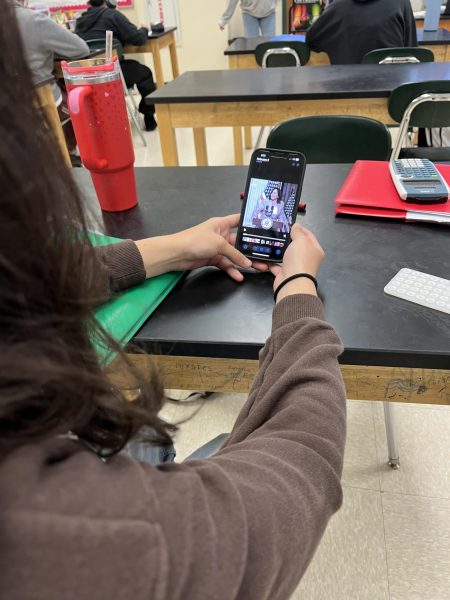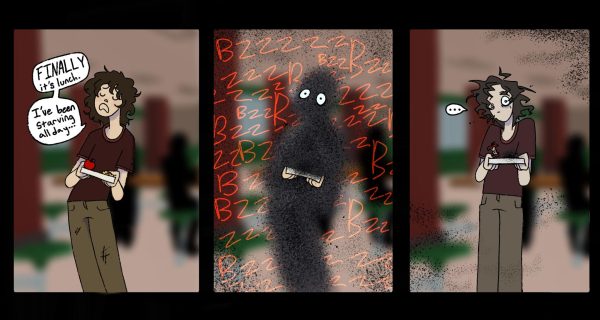A Closer Look, Vol. 2: Ivan the Terrible and His Son Ivan
The painting can be viewed as a warning, physically; killing is feasible; however, the monstrous blight infects the victim and murderer alike here. The painting can be appreciated as a commentary on love; those you love can also cut you the deepest, a double edged sword, in this case, scarring both father and son.
The painting, Ivan the Terrible and His Son Ivan by Ilya Repin tells the story of grief, insanity, and controversy that outlived the painter and has relevance that runs deep into the canvas. Ivan desperately holds his son’s body, pressing his lips to his head while covering his wounds, mirroring the Biblical Mary when her dead son is splayed across her lap. Telling the tale of traumatic pain that passes from child to parent; having an air of devastation after intense loss. Ivan the Terrible’s eyes tell the story of pain, horror, and regret powerfully taking over the onlooker, so much so that it is impossible not to feel profound sadness for the father and son confined to the canvas.
The tragic scene is unfortunately based off the real murder of the son, Tsarevich Ivan Ivanovich, after his father Ivan IV Vasilyevich killed him in a fit of rage, fits that he became more prone to as he got older. What set off Ivan in this particular instance is unclear, but the story of the painting is crystalline: rage, realization, and regret. The disarray of the furniture and carpets, the dark maroon background, tell of the animalistic ravaging of the innocent. Yet, looking into the eyes of the monster, it is hard not to pity Ivan even knowing what he has done: the painting is a moral dilemma. The painting can be viewed as a warning, physically; killing is feasible; however, the monstrous blight infects the victim and murderer alike here. The painting can be appreciated as a commentary on love; those you love can also cut you the deepest, a double edged sword, in this case, scarring both father and son.
To a new generation, it can be viewed as the risk of ignoring mental health. It is dangerous to the person suffering, and for those who love them, as seen here; violence in the mind can manifest itself onto the unsuspecting. In the 16th century, mental health was not understood, but now most historians agree Ivan most likely had temporal lobe syndrome, or bipolar disorder, or less possibly a personality disorder, all would affect his judgment and would send him into fits of rage. It is hard to observe Ivan clutching his son in agony and not relate it to when you perhaps acted out on someone you shouldn’t have and hurt them because you couldn’t heal yourself; you know apologizing won’t take away the bloodshed and tears, instead you wish you read the warning signs before it was too late. Ivan’s paranoia was set off by the loss of his wife to illness. From then on he believed he was poisoned, he executed counselors, and used a spear as a walking stick, which can be seen at the bottom of the painting. It is painfully clear that Ivan was never able to process that grief and that led to him having to carry a metaphorical spear for the rest of his life.
This painting of violence has been on the receiving end of violence twice, once in 1913 when it was slashed with a knife, and as recently as 2018 by a drunken visitor with a metal bar. In 1913, the man who vandalized the painting screamed, “enough death, enough blood.” This man would be pronounced as insane, as life imitates art; it was as if the man saw himself in Ivan and revolted against his own fate. The painting was the first to be banned from viewing in Russia, in 1885 by Alexander III who was offended by the painting since it was inspired by the assassination of Alexander II four years prior. The accuracy of the painting is questionable, considering it was made 200 some years after the incident, and the incident itself is not well documented; most agree Ivan killed his son, though this is not confirmed, and some believe his son died of an illness common to the time. Either way the uncertainty lends itself to controversy. Russian nationalists still believe the painting is part of a smear campaign, and detest its display, but what the painting has to teach goes beyond political alliances. There is a lesson to be learned in the pain and suffering of its subjects.










Lisa King • Apr 23, 2024 at 1:06 pm
I stumbled upon this article after doing a google search of this painting. It is mentioned in Amor Towles’s novel, “A Gentleman in Moscow” which I just finished for the second time.
I found this article very well written and commented frequently to myself how much I was enjoying it while reading. I imagined it was written by a well renowned scholar of the art world…until I read the author’s bio.
I’m not easily impressed but I was today. Congratulations on such a well thought out and well written critique. Thinking to bring the perspective of modern opinion into the realm of possibilities regarding the painting’s subject was, shall I say, a stroke of genius. I believe yours is a future that is not only bright but potentially on fire. My best to you.
xavotron • Dec 5, 2024 at 11:46 am
ok nerd